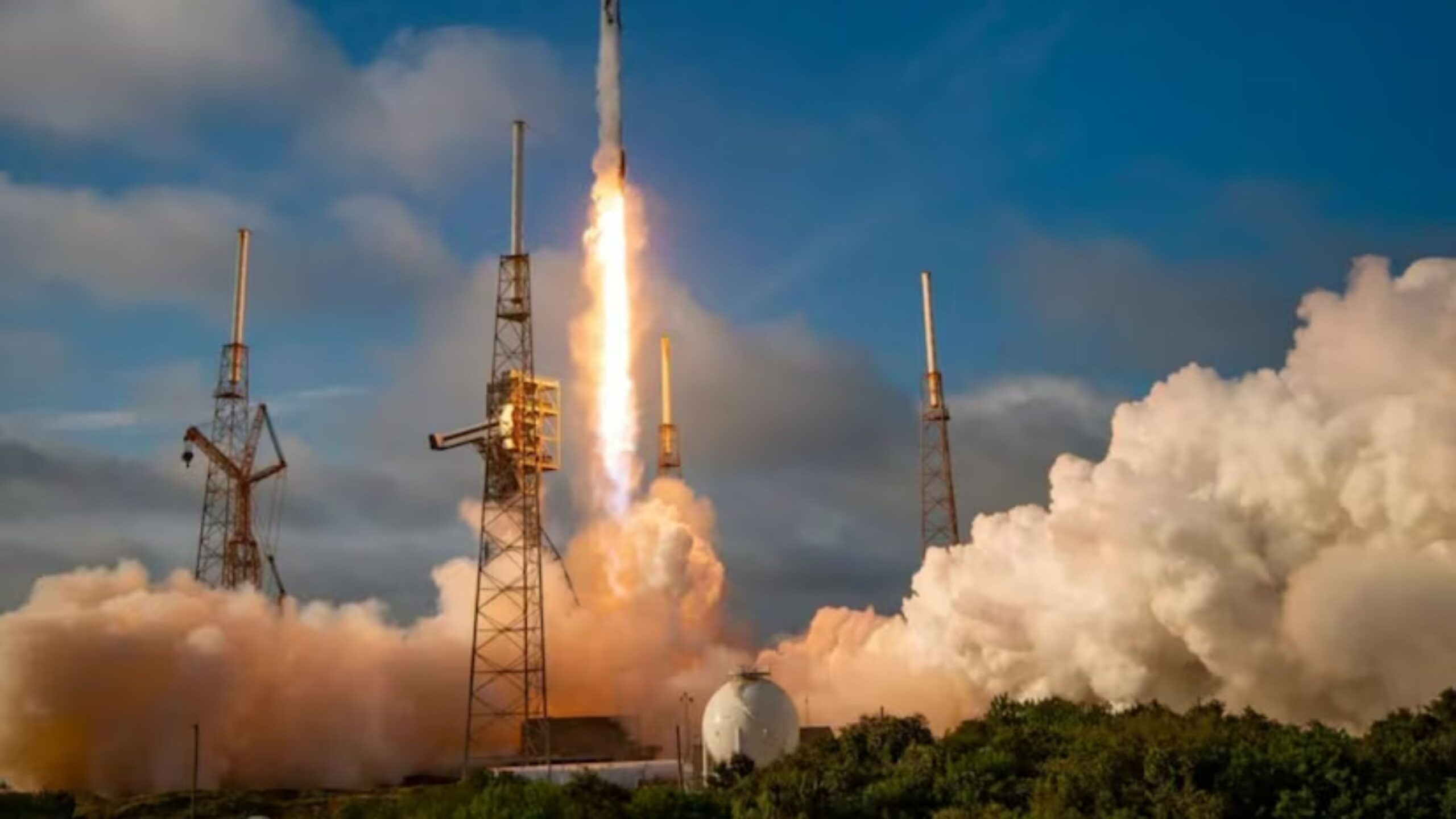At exactly 12:01 AM (IST) on Tuesday, the GSAT-20 satellite began its 34-minute journey into space. The launch took place from Space Complex 40 at Cape Canaveral in Florida, USA. The Falcon 9 rocket, which was on its 396th flight, successfully lifted the 4,700 kg satellite into orbit, with the mission being monitored by senior ISRO officials from their Bengaluru headquarters.
“Launch successful,” said Radhakrishnan Durairaj, Chairman and Managing Director of New Space India Limited (NSIL), the commercial arm of ISRO. Durairaj confirmed that the satellite achieved a “very precise orbit,” marking the success of the mission.
GSAT-20: A Cutting-Edge Satellite for India’s Digital Future
GSAT-20, designed to operate for 14 years, is India’s most sophisticated communications satellite. It uses the advanced Ka-band frequency—enabling higher bandwidth communication—which will help strengthen internet connectivity across India, especially in rural and remote regions. It is the first ISRO satellite built solely for the Ka-band, representing a significant leap in India’s space capabilities.
The satellite is expected to provide enhanced broadband services, including the facilitation of in-flight internet for commercial airlines. With no co-passenger satellites on this launch, GSAT-20 was dedicated solely to this mission, underlining the strategic importance of this satellite for India’s communications infrastructure.
SpaceX’s Falcon 9 Rocket: A Remarkable 99% Success Rate
The Falcon 9 rocket used for the launch was a standard Falcon 9 B-5 model, known for its remarkable reusability. Standing at 70 meters tall and weighing 549 tonnes, the rocket is designed to lift heavy payloads into orbit. It can carry up to 8,300 kg to the geosynchronous transfer orbit (GTO) and 22,800 kg to low Earth orbit (LEO).
In a spectacular demonstration of SpaceX’s reusability technology, the rocket’s first stage was successfully recovered just 8 minutes after liftoff. This was the 371st successful recovery of a Falcon 9 booster by SpaceX, further cementing the company’s reputation for innovation in reusable rocket technology.
India Takes Control of GSAT-20 Post-Launch
Once the GSAT-20 satellite was successfully placed into orbit, control was transferred to India’s Master Control Facility (MCF) at Hassan, Karnataka. The satellite will remain under the facility’s supervision until it is moved to its final geostationary orbit, located 36,000 kilometers above India.
Dr. S. Somanath, Chairman of ISRO, confirmed that the satellite was “healthy” and that the solar panels had successfully deployed. He described the launch as “very successful,” emphasizing that the mission was a crucial step for India in strengthening its space and communications infrastructure.
A Milestone in ISRO-SpaceX Partnership
This mission marks the first time that ISRO has launched a satellite through its commercial arm, New Space India Limited (NSIL), on a SpaceX rocket. It also highlights the growing collaboration between India’s space agency and private companies like SpaceX. With the successful deployment of GSAT-20, both entities have reaffirmed their commitment to advancing space exploration and communications technology.
A Future-Oriented Satellite for India’s Growing Needs
As India continues to expand its digital and communications networks, GSAT-20 will play a crucial role in ensuring that even the most remote regions have access to high-speed internet services. The satellite is expected to serve a variety of sectors, including telecommunications, broadcasting, and aviation, helping India to close its digital divide and provide reliable connectivity for millions of people.
SpaceX and Falcon 9: A Proven Track Record
SpaceX’s Falcon 9 rocket has achieved an impressive track record, with 396 flights to date and a near-perfect success rate of 99%. Experts estimate that the cost of a dedicated Falcon 9 launch is around $70 million on average. With its continued success in space missions and reusability, SpaceX is poised to remain a dominant force in the global space industry.




